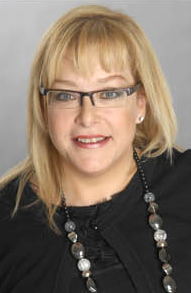Ten Steps to Building Employee Engagement
Ten Steps To Building Employee Engagement by Irene Becker
Guest Post on Switch and Switch & Shift Blog Oct 2012
© Irene Becker | www.justcoachit.com | 3Q Leadership™ Blog – Reach-Resonance-Results
Helping smart people and organizations communicate and lead forward smarter, faster and happier
You have the right people on the bus, but how do you keep them engaged? Here are ten simple but powerful steps:
Step 1. Make engagement your mantra
Employee engagement, engagement of colleagues and peers, engagement of constituents and stakeholders, engagement of clients and communities, social/digital engagement will make or break your bottom line. You may be able to make a quick buck without engagement, but turning that buck into many bucks, developing an organization that will survive and thrive means building a me to we culture.
Step 2. Get Social
Develop one to one, one to group, virtual and social/digital relationships that stick. The greatest business idea, product or service will not grow, evolve and produce results without human intervention, interaction and collaboration. Innovation and engagement are collaborative. Your people, your employees, colleagues, vendors, stakeholders and the community and large will pave the way for your success or failure.
Step 3. Listen, and listen more
Listen for words, actions, pauses, cues that will tell you what is going on beneath the surface. Develop higher emotional intelligence; improve your self-awareness and awareness of others. Learn to pick up social, cultural, personal, verbal cues that tell you what is important to your audience and use and model these cues to create engagement and build rapport.
Step 4. Go for the gold
Remember the golden rule. Strong relationships are built on shared values, integrity and transparent communication. There is no room for error in a digital world, no room for verbal or written duplicity. Transforming potential into results, challenges into innovative solutions demands a higher degree of engagement, integrity and transparency of communication than ever before.
Step 5. Care first
communicate second because you cannot make a fire with wet wood. USE care-frontation, not confrontation. Develop new ways, a better style of communication that will build a bridge between what is and what can be. Build a clear fence around expected and acceptable, make sure that goals, objectives and expectation are crystal clear, but do it with care-frontation.
Step 6. Fail forward faster and better
When errors occur, fail forward. Admit there has been a failure in and learn to use this failure to drive collaboration and engagement by focusing on the shared objective and how you will work together with mutual respect to attain it. Start training yourself and others to become solution focused, by using errors and challenges that have come to innovate and create better and stronger solutions. Fail forward, faster and better.
Step 7. Take every opportunity to reinforce the foundation of your house
Walk your talk, talk your walk. Take every opportunity to use shared values, objectives and integrity of communication and action to build a ME to WE culture. Embrace and applaud great work, develop new ways to help others fail forward, and get rid of the few bad apples whose values, objectives and integrity are out of sync.
Step 8. Learn and play forward
Make time for learning, embrace and applaud learning opportunities while also taking time to engage in activities that create down time, humor time, fun time; activities that not only drive greater rapport but will also enhance creativity and ideation. Put a healthy dose of learning and fun into all your communication. Set the tone, and tone it up. Negativity will bread more negativity. Fear puts human beings into fight or flight, neither of which drive engagement, empowerment or results.
Step 9. Generate Enthusiasm.
You cannot make a fire from wet wood. Engagement means empowering the others to feel that they can do their best, that they have a valuable contribution to make, and that if they have failed they will use the experience to learn and fail forward. Recognize accomplishments; redirect failure so that people feel free to fail forward. Empower, engage and repeat.
Step 10. Feed hearts.
Make learning, growing and giving REAL. Find new ways to reach out and serve the community at large. Motivate and inspire not only those you employ but all constituents to be part of a greater goal that speaks to contribution and purpose. Show those you lead and serve that you care, and help them care back.
First woman CEO of a steel company in Canada, Irene Becker has a track record of trailblazing accomplishments in business and in the community at large. Irene is an inspiring executive coach, speaker and writer whose R-E-A-C-H methodology and 3Q focus has helped clients achieve breakthrough results in their careers, communication, leadership and lives. Passionate about the integrity of her work, Irene is dedicated to helping change-makers LEAD forward at the speed of change.
For more information on Irene and the services she offers, visit Just Coach It – | The 3Q Edge™ . Follow her on Twitter @justcoachit. Watch this video interview of Irene Becker, where she talks about leading forward at the speed of change…or just do it. Call Irene @ 416-671-4726 Skype Irene beckerirene. She goes the distance for clients face to face, by telephone and virtually.










